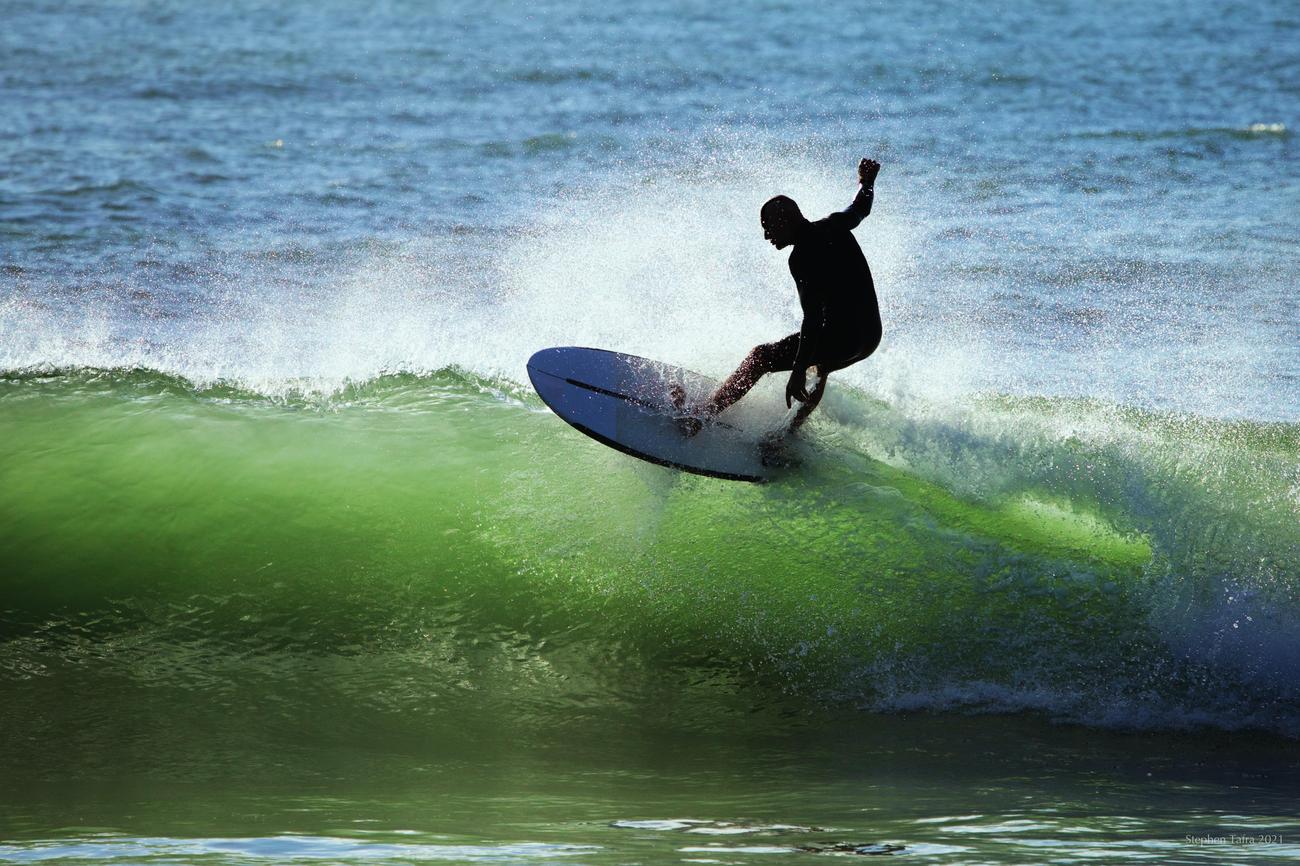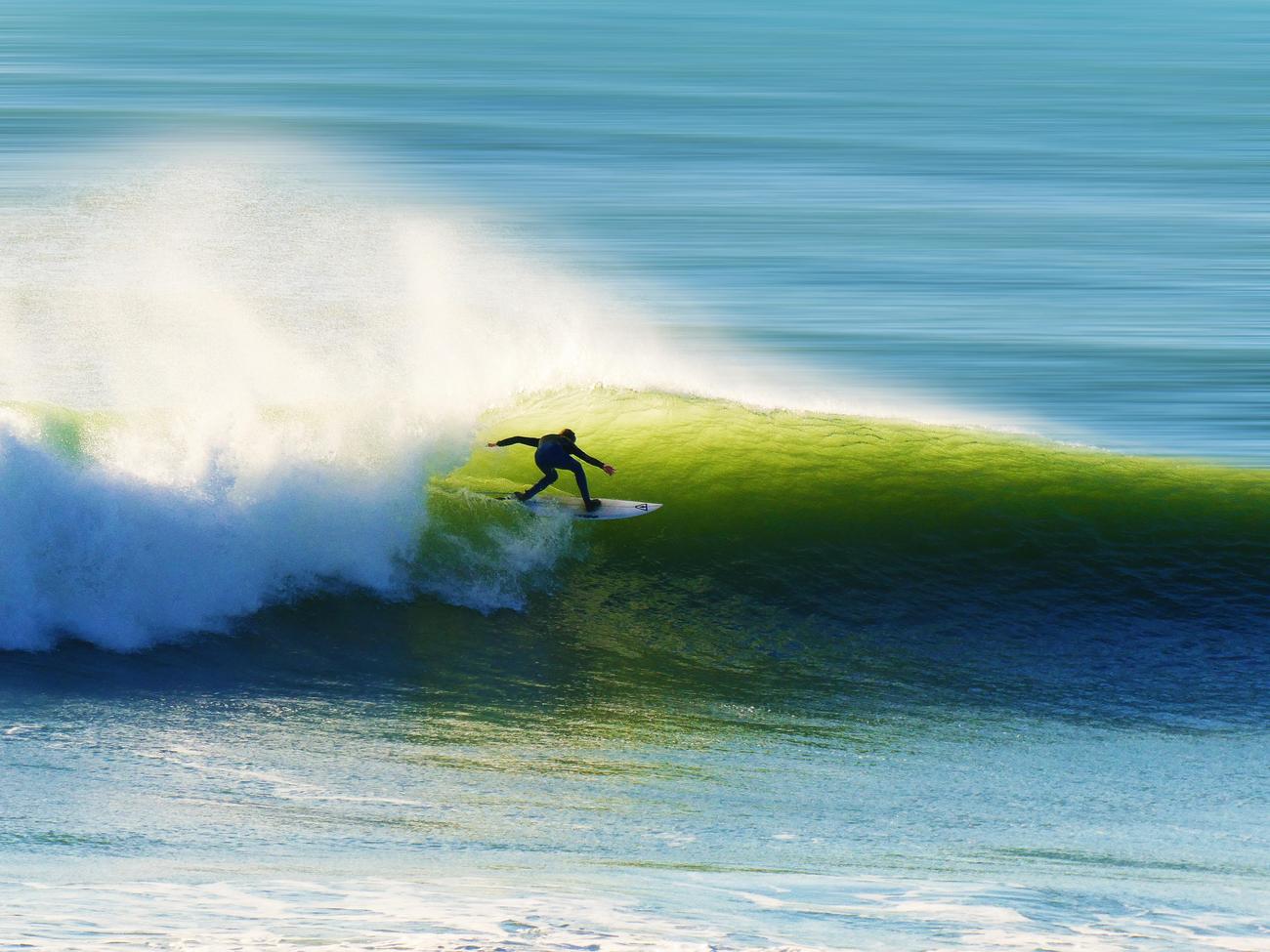Ancient Polynesians were the first surfers. Hawaii is considered the birthplace of modern surfing. These historical facts lay the foundation for an extraordinary journey into the world of this thrilling water sport. In this article, we will dive deep into the surfing chronicles, uncovering the truths and legends that have sculpted the art of riding waves. From the rich cultural heritage of the Polynesians to the vibrant surf scene in Hawaii, prepare to immerse yourself in the captivating universe of surfing.

Facts About Surfing
Surfing, the exhilarating water sport that has captured the hearts of adventure seekers worldwide. It’s all about riding the waves, feeling the power of the ocean beneath your feet, and becoming one with nature’s incredible force. So, let’s dive deep into the mesmerizing world of surfing and uncover some interesting facts that will leave you awestruck.
1. The Birth of Surfing:
Did you know that surfing has been around for thousands of years? It’s true! The Polynesians, with their innate connection to the ocean, were the original pioneers of this captivating sport. They rode the swells on wooden boards, harnessing the energy of the waves long before modern surfboards came into existence.
2. The Aloha Spirit of Hawaii:
Hawaii, with its breathtaking landscapes and world-class breaks, is considered the birthplace of modern surfing. The islands boast legendary spots like Waikiki Beach, where the sport’s popularity skyrocketed in the early 20th century. It’s where the concept of “aloha spirit” and the art of wave riding truly thrived.
3. The Evolution of Surfboards:
In the early days, surfboards were heavy, cumbersome, and lacked fins. Imagine trying to control a massive, fin-less plank while tackling powerful waves! Thankfully, technological advancements revolutionized surfboard design, making them lighter, more maneuverable, and ultimately enhancing the surfer’s experience.
4. Making Waves in California:
California played a pivotal role in popularizing surfing. The first official surf contest took place in 1928, turning surfing into a competitive sport. It was a monumental moment that propelled the surfing community into the spotlight and paved the way for the vibrant surf culture we know today.
5. Record-Breaking Rides:
Surfing is all about pushing boundaries, and those who dare to ride the biggest waves achieve incredible feats. Imagine riding a wave for a staggering 3 hours and 55 minutes – that’s the current world record for the longest ride! And if that’s not impressive enough, imagine conquering a wave towering at a jaw-dropping 101 feet, the largest wave ever surfed!
6. Surfing for the Mind, Body, and Soul:
Surfing goes beyond the adrenaline rush and the thrill of conquering waves. It’s a sport that can truly improve mental health. The combination of physical activity, connection with nature, and the serene tranquility of the ocean creates a perfect symbiotic relationship, offering surfers a meditative state of bliss and a release from everyday stresses.
7. A World of Surfing Terminology:
Surfing has its own language, filled with unique terms that reflect the community’s rich culture. From ‘tube’ to ‘point break’ and ‘beach break,’ these terms describe the various types of surf breaks that shape the perfect wave for every surfer. Understanding this vocabulary helps navigate the exhilarating world of surfing and enhances the sense of belonging within the community.
In the vast ocean of surfing, these facts serve as guiding beacons, shining light on the sport’s rich history, incredible achievements, and the profound impact it has on those who dare to ride the waves. Whether you’re a seasoned surfer or someone who admires the beauty and freedom of the sport from afar, there’s always something new to discover, to crave, and to wonder about.
So, dive in and immerse yourself in the captivating world of surfing. Strap on your board and ride the thrilling waves of knowledge, because when it comes to surfing, the possibilities are as endless as the ocean itself.
“Surfing is not just a sport; it’s a way of life and a profound connection with the power of nature.”
Facts About Surfing
Surfing, an exhilarating water sport that combines athleticism and a deep connection with nature, has numerous benefits that every adventurer should explore. From improving physical fitness to enhancing mental well-being, the benefits of surfing are boundless. Dive into the world of surfing and discover the joy it brings!
Are you curious about what exactly surfing entails? Look no further than our article on “What Is Surfing.” Gain insights into the origins of this popular sport, the tools and techniques used, and how to navigate the awe-inspiring waves with grace and skill.
If you’re fascinated by the history of surfing and want to delve into its origins, our article on “Who Invented Surfing” is a must-read. Uncover the story of the first wave rider and the cultural significance of this ancient practice. Let the waves of knowledge sweep you away!
For those seeking a deeper understanding of the sport, visit our article on “Information About Surfing.” Discover insider tips, tricks, and safety guidelines that will allow you to ride the waves with confidence. Explore the vast ocean of knowledge awaiting you!
The history and evolution of surfing are as captivating as the sport itself. Immerse yourself in the thrilling tale of how surfing has transformed over time through our article on the “History Of Surfing.” From its Polynesian roots to its modern-day status as a global phenomenon, this story will have you hanging ten!
Dreaming of turning your passion for surfing into a professional career? Uncover a world of opportunities by exploring “Professional Surfing Organizations.” Learn about the various competitions, events, and professional surfing circuits that are the backbone of the industry. Dive deep into the realm of professional wave riding!
With the alluring call of the waves echoing in your ears, it’s time to embark on a surfing adventure of a lifetime. Unlock the numerous benefits, explore the history, and join the global surfing community. Click here to begin surfing: Benefits Of Surfing
Ancient Polynesians were the first surfers.
Surfing, a sport that stirs the soul and captivates the hearts of countless adventurers, has a history as vast and deep as the ocean itself. While the modern-day image of surfers catching waves off the coast of Hawaii may be familiar to many, the origins of this thrilling water sport can be traced back to the ancient Polynesians. These oceanic pioneers, with their profound connection to the sea, discovered the art of riding waves long before it became a global phenomenon.
In ancient Polynesia, where the ocean served as a lifeline and a source of sustenance, the act of surfing held deep cultural significance. It was not merely a recreational activity but a way of life—a means of communing with the powerful forces of nature and expressing reverence for the vast expanse of the sea. The Polynesians saw the waves as both a playground and a spiritual realm, where they could find harmony and connect with something greater than themselves.
Word spread through the surf that the ideal wave-riding destination lay within the islands that would later become known as Hawaii. It was here that ancient Polynesians brought their surfboards, crafted with meticulous care from the resources at their disposal. These early surfboards, known as “olo” or “alaia,” were remarkably different from the ones we recognize today. They were typically much shorter and thinner, allowing the riders to effortlessly glide across the water’s surface.
The significance of surfing within Polynesian culture is evident in the Hawaiian language itself. The word for surf, “he’e nalu,” translates to “sliding on a wave.” This name beautifully captures the essence of the sport, highlighting the grace, flow, and interconnectedness that define the act of riding a wave.
As surfing evolved over time, so did the tools and techniques employed by its practitioners. The ancient Polynesians developed a deep understanding of the ocean’s rhythms and the art of wave selection. They knew when to paddle out and when to catch a wave, as if they possessed an innate sixth sense honed through years of experience and observation.
However, many aspects of the ancient Polynesians’ surfing journey remain shrouded in mystery. While cave paintings and historical evidence attest to the existence of this ancient sport, the full extent of their involvement and the details of their surf culture remain elusive. The history of surfing is an ongoing inquiry, and with each new discovery, we inch closer to unraveling the secrets of its past.
From the shores of ancient Polynesia to the modern-day surfing meccas, the evolution of this captivating sport has been a remarkable journey. What began as a deeply rooted tradition within Polynesian culture gradually gained recognition as a thrilling and challenging water sport. Innovations in surfboard technology, such as the introduction of fin designs and the utilization of lighter materials, propelled surfing into new realms of performance and opportunity.
Surfing transcends mere physicality—it enters the realm of mental health and overall well-being. Riding a wave offers a unique form of bliss where time stands still, and the mind finds release from the stresses of everyday life. The ocean becomes a sanctuary, a place where worries are washed away, and a sense of freedom permeates the soul.
As we dive deeper into the world of surfing, the surfers’ language brings us closer to their vibrant community and culture. It is a jargon infused with passion, camaraderie, and a shared connection to the tides. Terms like “stoked,” “barreled,” and “shredding” become expressions of joy, triumph, and the pure thrill of the ride. Through these words, the community fosters a sense of belonging that transcends geographic boundaries and creates a global family united by a love for the waves.
In conclusion, the ancient Polynesians were the pioneers of surfing, weaving their connection to the ocean into a sport that has become a global phenomenon. Their intimate understanding of the waves, their spiritual relationship with the sea, and their innovative craftsmanship paved the way for generations of surfers to come. Surfing continues to evolve, bringing new challenges, achievements, and connections to nature, all while honoring the remarkable legacy of the ancient Polynesians—the true first surfers.
Hawaii is considered the birthplace of modern surfing.
Surfing, known as “he’e nalu” in Hawaiian, has a rich history that dates back thousands of years. The ancient Polynesians were the original pioneers of this thrilling sport, and it was in Hawaii where surfing truly took on a modern form.
The Cultural Connection to Surfing
For Hawaiians, surfing wasn’t just a sport; it was deeply intertwined with their culture and spirituality. Cave paintings found in Polynesia provide the first recorded history of surfing, showcasing its significance in ancient society. Surfing was more than just riding waves; it was a way to connect with the ocean and the spiritual forces that governed it.
The Evolution of Surfing in Hawaii
By the end of the 19th century, surfing in Hawaii had become sporadic, but it experienced a revival in the early 20th century with the development of Hawaii as a tourist destination. It was during this time that surfing truly evolved and started to resemble the sport we know today. Hawaii became a melting pot of surf culture, attracting people from all over the world who were captivated by the art of riding the waves.
Hawaii’s Contributions to Surfboard Technology
One of the reasons Hawaii is considered the birthplace of modern surfing is due to the advancements in surfboard technology achieved by the Hawaiians. Ancient Polynesians crafted surfboards called “olo” or “alaia” that were shorter and thinner than modern surfboards. These boards were carefully engineered to glide effortlessly on the water, showcasing the Hawaiians’ deep understanding of wave dynamics.
Surfing’s Impact on Mental Health
Surfing isn’t just about physical prowess; it has profound mental health benefits as well. When you’re out in the ocean, riding a wave, it’s as if time stands still. The worries and stresses of everyday life fade away, and all that matters is the exhilaration of being in the moment. Surfing provides a sense of freedom, bliss, and release that is difficult to replicate in any other activity.
A Vibrant Surfing Community and Culture
Surfing has its own unique terminology and expressions that reflect the vibrant community and culture surrounding the sport. From “barrels” to “cutbacks,” surfers have developed a language that enhances their sense of belonging and camaraderie. Being a part of the surfing community means immersing oneself in a world of shared experiences, unrivaled passion, and an unspoken understanding of the ocean’s power.
Surfing in Hawaii has left an indelible mark on the world of surfing. Its deep cultural connection, advancements in surfboard technology, and the vibrant community it has fostered all contribute to Hawaii being considered the birthplace of modern surfing. So, the next time you hit the waves, remember the roots of this exhilarating sport and the incredible legacy that began on the shores of Hawaii.
FAQ
Question 1: How did surfing originate?
Answer 1: Surfing originated in ancient Polynesia, with cave paintings and historical evidence showing that it has been practiced for hundreds of years. Ancient Polynesians were the first surfers and brought the sport to Hawaii, where it became popular.
Question 2: What is the significance of surfing in Polynesian culture?
Answer 2: Surfing played a significant role in Polynesian culture and was more than just a recreational activity. It had societal implications and a connection to spirituality for Hawaiians, making it an integral part of their culture.
Question 3: What is the history of surfboards?
Answer 3: The first surfboards were crafted by ancient Polynesians as early as the 700s. These early boards were heavy, fin-less, and hard to control. Over time, surfing evolved with innovations in equipment, techniques, and ancillary culture.
Question 4: Why is Hawaii considered the birthplace of modern surfing?
Answer 4: Hawaii is considered the birthplace of modern surfing due to the skill level and advancements in surfboards achieved by Hawaiians. Surfing was practiced sporadically in Hawaii by the end of the 19th century but experienced a revival in the early 20th century with the development of Hawaii as a tourist destination.
Question 5: How does learning the history of surfing contribute to the sport?
Answer 5: Learning the history of surfing helps develop a connection to the culture and a healthy respect for the sport. It allows surfers to appreciate the origins and evolution of the sport, as well as gain insights into different techniques and styles.
- Guatemala vs. Costa Rica: Plan Your Trip Smartly - April 16, 2025
- Master Types of Pumps: Ultimate Guide to Selection - April 16, 2025
- Unlock Types of Makeup Secrets: Master Any Look Now - April 16, 2025
















